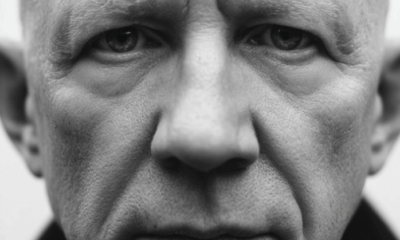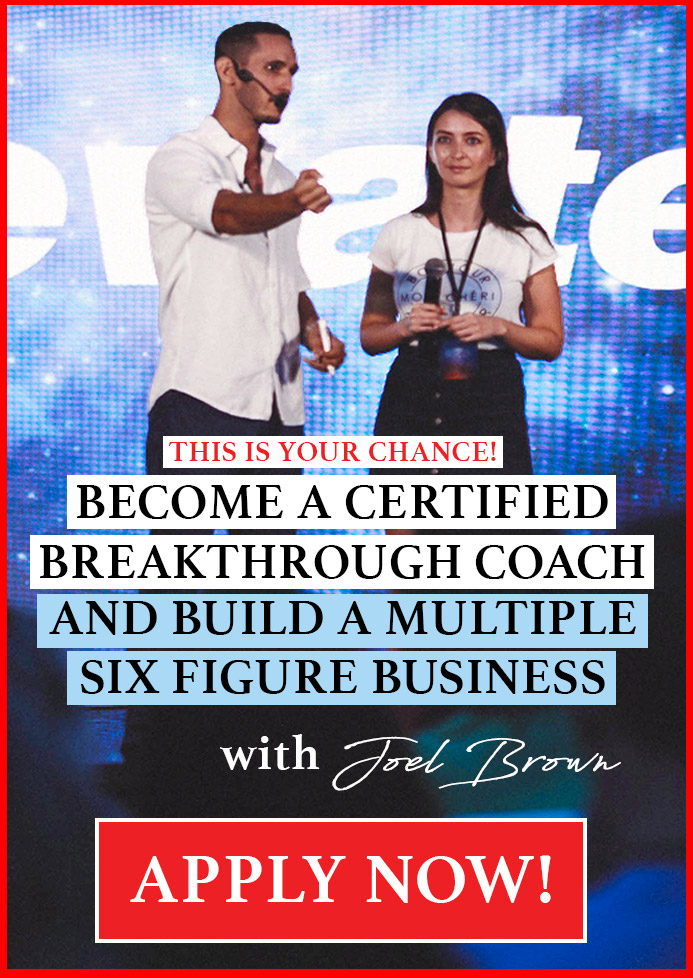Success Advice
How to Manage the Leadership See-Saw
Great leadership requires constant adjustments in style and approach

Leadership is a balancing act. Almost every quality of great leaders can be overdone and its polar opposite can be needed on occasion (except for integrity). For example, being outspoken is a great quality, but there are also times to hold back from giving your point of view so that others speak first.
Great leadership requires constant adjustments in style and approach to get the best out of a broad range of people.
The one balancing act we speak too infrequently about is the balance between, on the one hand, knowing, doing and executing – in effect being the go-to expert who can help the team solve any problem and, on the other hand, enabling, orchestrating, and not knowing – something I call “spanning.”
In today’s knowledge economy, expertise is highly valued. Leaders use their expertise to gain credibility, to win over the loyalty of their team, and to solve team problems. Expertise driven leaders add value because of their ability to provide answers, do the work, and control quality and risk.
However, expertise driven leadership keeps the leader from stepping out of the details, letting the team wrestle with problems, and taking a broader view. Spanning leaders add value by focusing on priorities and direction, by connecting across the organization, and by tapping their broad network for information and perspective.
Keeping Your Balance
Every leader needs to understand how to add value to the job, how to get the right work done, and how to interact with people. Leaders must learn to lead at times as the expert and at times as a non-expert – that is, as a spanner who can span across knowledge domains. The core challenge is how to balance the two approaches.
Karen is the Chief of Internal Audit and a deep expert in audit. She is very intelligent, highly personable, and brings much needed depth to her team. The challenge Karen faces is not about abandoning her expertise – those strengths are definitely valued. However, her company also needs her to weigh in on the broader challenges they are facing, not just represent her functional perspective.
She needs to be able to drill deeply when necessary and quickly come back up to the 30,000-foot level. In effect, her challenge is a balancing act between the depth of expertise and the breadth of spanning.
The Spanning Checklist
- Understand what you do that adds the greatest value to the team and organization – the things that only you can do. As an exercise, think about a leader you admire and value. Write a list of all the things this person does that adds value to you and to the organization, especially the things that are unique to him/her and that make them so valued. Look over that list and circle the qualities you need to be practicing more often. Note the ones you think you already do well and keep doing those.
- How much do you really need to know? Do you need to know the details, or do you need to understand how all the parts fit together? Ask your mentors and senior leaders.
- How much of your time and energy should be spent on being the expert and how much in the spanning space? Ask your manager and your manager’s manager how they think your time should be divided. Then monitor your time in a given week to make sure you are roughly sticking to those guidelines.
- At times you will need to dive deeply into the details to understand a problem or to resolve a conflict. The challenge is then how to come back up to a higher level and not get stuck in the details. As you find yourself diving deeply, ask why you are doing so. Ask yourself who else should be taking this deep dive with you or even partially on their own. If you bring your direct report with you for each dive and each meeting, you will find it much easier to turn over work to them, because they have been on the journey with you.
- To delegate more effectively, avoid delegating that simply dumps an issue on someone else while you remain hands off. That is ditching not delegating. Instead, jointly create a set of milestones, next steps, and a timeline with the person you are delegating a task to. Do so by asking questions, not by dictating. Then, touch base on progress at each milestone, during which time you can provide updates on new insights you have gained and you can track that work is progressing as expected. You can also give feedback along the way.
The balancing act that great leadership requires is achievable. However, you have to be thoughtful about when the opposite of what’s in your comfort zone is needed. You cannot simply default to your preference every time.
Success Advice
Psychologia wygranej: jak emocje wpływają na decyzje graczy
Świat kasyn to nie tylko świat rozrywki i szansy na wygraną, ale także przestrzeń intensywnych emocji. Każdy gracz doświadcza mieszanki ekscytacji, adrenaliny i napięcia, które wpływają na podejmowane decyzje. Zrozumienie psychologii wygranej pozwala lepiej kontrolować emocje, planować strategie i podejmować świadome zakłady.

Jak emocje kształtują decyzje podczas gry
Emocje są jednym z najważniejszych czynników wpływających na decyzje graczy. Chęć natychmiastowej wygranej, strach przed stratą czy poczucie satysfakcji po sukcesie mogą powodować impulsywne zakłady lub przeciwnie — zbyt ostrożną grę. Psychologowie podkreślają, że kontrola nad emocjami jest kluczowa dla długofalowego sukcesu w kasynie.
Logowanie i komfort gry w kasynach online
W świecie gier online proces logowania ma ogromny wpływ na doświadczenie gracza. Intuicyjne i szybkie ice casino logowanie pozwala natychmiast rozpocząć sesję, minimalizując stres związany z technicznymi aspektami platformy. Dzięki temu gracz może w pełni skupić się na emocjach związanych z grą, analizie ryzyka i podejmowaniu decyzji strategicznych. Dodatkowo kasyna online oferują narzędzia wspierające graczy, takie jak historia wyników, statystyki i bonusy, które pomagają w świadomym planowaniu zakładów.
Tabela: Wpływ emocji na typowe decyzje gracza
| Emocja | Typowe zachowanie | Potencjalny wpływ na wygraną |
|---|---|---|
| Ekscytacja | Zakład większej kwoty | Może zwiększyć potencjalną wygraną, ale też ryzyko straty |
| Strach | Unikanie ryzykownych zakładów | Ogranicza możliwości, zmniejsza szanse na wygraną dużą sumę |
| Satysfakcja po wygranej | Kontynuacja gry w tym samym stylu | Może prowadzić do impulsywnych decyzji |
| Frustracja po przegranej | Próba „odrobienia strat” | Zwiększa ryzyko podejmowania nierozważnych zakładów |
Strategie kontrolowania emocji w grze
Aby emocje nie przejęły kontroli nad decyzjami, gracze mogą stosować różne strategie:
-
Planowanie budżetu na sesję i trzymanie się go
-
Wykorzystywanie narzędzi analitycznych dostępnych online
-
Stosowanie przerw w trakcie gry, aby ocenić swoje decyzje
-
Korzystanie z bonusów i promocji w sposób przemyślany
-
Świadome monitorowanie poziomu adrenaliny i emocji podczas gry
Podsumowanie
Psychologia wygranej pokazuje, że emocje w kasynie mają ogromny wpływ na decyzje graczy. Świadome zarządzanie swoimi reakcjami, korzystanie z narzędzi analitycznych oraz strategii pozwala czerpać satysfakcję z gry, minimalizując impulsywne zachowania i niekontrolowane ryzyko. Dzięki platformom online, takim jak ice casino, gracze mogą w komfortowych warunkach rozwijać swoje umiejętności, obserwować statystyki, korzystać z bonusów i podejmować przemyślane decyzje, które zwiększają szanse na sukces i pozytywne doświadczenia z gry.
Success Advice
Kiedy liczby zaczynają kierować emocjami
Na pierwszy rzut oka hazard wydaje się światem opartym wyłącznie na matematyce. Procenty, kursy, statystyki i algorytmy tworzą ramy każdej gry. Jednak za tym uporządkowanym światem liczb kryje się coś znacznie bardziej złożonego — emocje gracza, które często przejmują kontrolę w kluczowych momentach rozgrywki.

Liczby w kasynie nie są neutralne. Każdy współczynnik, każda wyświetlana wartość wpływa na sposób myślenia i odczuwania. Informacja o możliwej wygranej potrafi wywołać ekscytację, a seria przegranych — frustrację lub chęć szybkiego odegrania się.
Mechanika liczb a reakcje psychologiczne
Gdy gracz widzi konkretne wartości — wysokość stawki, potencjalną nagrodę czy procent zwrotu — jego umysł automatycznie próbuje nadać im znaczenie. Nawet osoby, które nie analizują statystyk na co dzień, reagują emocjonalnie na zmieniające się cyfry. To one budują napięcie i poczucie ryzyka.
Nowoczesne platformy, takie jak ice casino, prezentują dane w sposób czytelny i dynamiczny, co wzmacnia wrażenie kontroli. Paradoksalnie im więcej informacji otrzymuje gracz, tym łatwiej może ulec emocjom zamiast chłodnej kalkulacji.
Dlaczego liczby potrafią wciągać
Człowiek ma naturalną tendencję do szukania wzorców. W hazardzie przejawia się to w analizowaniu serii wyników i próbach przewidywania kolejnych zdarzeń. Nawet losowe sekwencje zaczynają wydawać się logiczne, co wzmacnia zaangażowanie i emocjonalne przywiązanie do gry.
Każda kolejna decyzja staje się odpowiedzią na liczby, które pojawiły się wcześniej. W ten sposób matematyka przestaje być tylko narzędziem, a zaczyna oddziaływać na psychikę gracza.
Równowaga między analizą a emocjami
Świadome podejście do gry polega na zrozumieniu, że liczby są elementem systemu, a nie obietnicą wyniku. Emocje pojawiają się naturalnie, jednak ich kontrola pozwala zachować dystans i podejmować bardziej racjonalne decyzje.
Aby lepiej zobrazować różnicę między chłodną analizą a emocjonalną reakcją, warto spojrzeć na poniższe zestawienie:
| Element gry | Podejście racjonalne | Reakcja emocjonalna |
|---|---|---|
| Wysokość stawki | Dopasowana do budżetu | Zwiększana pod wpływem impulsu |
| Seria przegranych | Przerwa lub zmiana strategii | Chęć natychmiastowego odegrania |
| Potencjalna wygrana | Ocena ryzyka i prawdopodobieństwa | Ekscytacja i nadmierny optymizm |
| Czas trwania sesji | Zaplanowany z góry | Przedłużany pod wpływem emocji |
Świadomość jako klucz do kontroli
Gdy gracz rozumie, w jaki sposób liczby wpływają na jego emocje, zyskuje przewagę nad impulsywnymi decyzjami. Hazard przestaje być chaotycznym doświadczeniem, a staje się formą rozrywki opartej na samokontroli i refleksji.
Ostatecznie to nie liczby rządzą grą, lecz sposób, w jaki człowiek na nie reaguje. Świadomość tego mechanizmu pozwala zachować równowagę między emocjami a rozsądkiem — a to właśnie ona decyduje o jakości całego doświadczenia.
Success Advice
Greatest Internet casino Usa: Finest Internet sites inside the 2025
Blogs
The new collected information is up coming used to assess the newest casino’s Security Index. It’s a given one an authorized casino instills a lot more trust as it have to operate in the regulations of the provided jurisdiction. Certain certification government actually wanted casinos to go through third-team game research. Betting sites functioning within the particular says are hit-and-miss on the greeting incentives.
The best Online casinos in the united kingdom by Category
Firstly, all of the casino games is actually designed giving our house a keen virtue, and therefore you’re constantly to play getting left behind. You can get happy and you may earn, but it is almost impossible to become winning on the a lot of time work on. Thus, for those who be able to victory, it is certainly better to withdraw their payouts. Because of the reacting about three simple and quick issues linked to incentives, video game, and you will period of web based casinos you want, you’re served with three best gambling enterprises you to definitely satisfy their conditions. Then it is simply a matter of choosing the one which looks far better your otherwise time for record if the you know you want observe more alternatives after all of the.
Blackjack, baccarat, French roulette, and you may craps will be the higher investing games from the local casino websites. You have to know strategy and you may specific choice models to achieve the highest RTP with our game. EWallets such PayPal and you may Neteller provide quick payouts, usually within 24 hours. However, they aren’t usually available at All of us-based casinos, and they have a charge of about step 3% to possess distributions. Borrowing from the bank and you will debit notes are an easy and you will familiar means for withdrawing finance, but not all casinos offer them.
A knowledgeable Us online casinos will be the web sites which have good licenses, which permit them to operate lawfully in the united states. After that you can score the fresh USA’s best on-line casino web sites founded on the online game, bonuses, percentage alternatives, mobile programs, and other key factors. The brand new professionals can start their travel which have an excellent welcome provide. The brand new casino provides lots of special offers and you will respect perks to have the normal participants. Also, which casino site also provides wagering and online casino poker in a few claims. All of these things have triggered the brand new user’s high ranking to your our very own set of an informed online gambling web sites.
Simple tips to Habit In control Playing at the Better United states of america Casinos on the internet
We love exclusive eighties/1990’s Vegas temper on the site, and therefore contributes a vintage contact to the Vegas Today feel. In both-people and online gambling enterprises inside the Canada for real currency features their attraction. Visa and Mastercard is actually generally accepted at the online casinos in the California for both places and you can withdrawals. Specific harbors is private to certain Canada web based casinos on account of sales produced amongst the operators and game designers. Reload incentives try a common strategy during the Canadian web based casinos, built to keep you motivated to make additional places immediately after stating its invited incentive. When shopping for a knowledgeable commission during the an on-line local casino, it’s crucial that you go through the slots’ advice.
- If a keen operator’s software is accessible via mobile phones, professionals can access a common video game each time, anyplace.
- If you would like swift winnings, extra shelter, otherwise anonymous transactions, you will find a safe payment method of suit you.
- As you’re looking at commission speed, its also wise to go through the number of payout procedures you to definitely appear.
- Overall, an informed web based casinos provide an incredibly comparable experience so you can actual, brick-and-mortar gambling enterprises.
- It’s a different day and age out of playing which is reshaping the new landscape out of activity regarding the Hill County.
- We only give you an informed on-line casino internet sites — as well as the fresh casinos which have made it to our finest rated online casino listing are smart all the-rounders.
It is very important just remember that , RTP may vary across the some other online casino games, and therefore a good casino’s RTP is short for the typical of all their games. Gaming.com recommendations all-licensed casino other sites in order to focus on what kits them apart and provides devices and then make contrasting him or her simple. The casino review try carefully facts-appeared and you will confirmed because of the we of benefits just before guide. We constantly upgrade ratings to keep advice direct, related and up-to-date, adhering to reveal remark strategy and you will article policy. It is extremely important to strategy online gambling inside the a safe and you can in charge method. To quit shedding target to gambling addiction, we advice your comprehend our very own writeup on simple tips to enjoy securely.
You can examine if your gambling enterprise try legit utilizing the UKGC’s searchable public check in to look in the license count. And while your’re there, see if they previously acquired any penalties from the UKGC. This is why we’ve picked to help you highlight a premier-tier Uk gambling enterprise that have an advantage that offers you something additional. Sure, modern jackpots is a part of gaming activity and see harbors which have that one. A few effortless resources will help you to are still aware and you can create your video game for cash reliable.
This lets you decide on the fresh commission method that suits your must-haves to possess rate, functionality, and you may charge. Demo gamble allows you to is harbors, blackjack, roulette, and prior to depositing and you will establishing wagers. Unfortunately, not all gambling enterprises provide demos, and this for a lot of may be a deal-breaker. And given prompt casino earnings without ID monitors, you should also make sure that a casino on the internet to the finest payment handles its site and pro money. Seek out a good padlock from the address club to confirm one to a casino webpages try encoded.
Greatest Online casinos A real income
While the payout speed raise, evident Us iGaming players will be consider often to see which iCasinos provides upped its games. You will find an educated online casinos Us houses right here at the OnlineCasinos.com. You can gamble with confidence from the all of our required web sites, understanding i simply focus on the best of an informed. Near to the gambling pros’ in-depth ratings, we trust current user reviews and quantitative local casino analysis items to send by far the most unbiased, trustworthy, and you will outlined assessments. AMEX is frequently thought to be one of the most secure and overall greatest fee tips within the Canada and you will beyond. It’s convenient to use but not usually supported by casinos on the internet within the Canada, and you may not since the common because the Visa otherwise Bank card.
Success Advice
Dolphin’s Pearl Ports, A real income Casino slot games & 100 percent free Gamble Demonstration
Content
Within the Bovada Gambling establishment, free delight in loans come as opposed to requiring a deposit, taking pros to make use of added bonus financing directly in their online game. Including borrowing can be utilized to the a variety of video clips games, always requiring individuals to satisfy specific words ahead of cashing away one payouts. Instead of many other dolphin games on line, there is a way to earn tons of money – if the smartly starred better – for the Dolphin’s Pearl. Simply because the countless added bonus and you may multiplier have discover to the video game. Among the best and popular have to your Dolphin’s Pearl is the occurrence from spread symbols anywhere across the reel.
Nj-new jersey Goes on Force to help you Control Problem Gaming
To help you etch away pay range wins, make an effort to fall into line some of the a dozen icons on the a working spend line. These are the dolphin, manta beam, crab, water pony, tiger fish, college or university of seafood, An excellent, K, J, Q, 10 otherwise 9 signs. 5, cuatro, otherwise 3 for the pay line tend to trigger a victory in the paytable, which is seen using the ‘Paytable’ option. The brand new dolphin, manta beam, and you may crab will pay whenever 5, cuatro, step three, or 2 signs blend. Set your wagers earliest so you know exactly how much you a paying for every twist. You might choose to wager step one in order to 9 spend-traces after which lay their wager for each range ranging from step 1 and you can a monstrous 5,000 gold coins on every.
Not only will he getting fun team, but he’ll and assist you on the quest in order to house severe winnings which may be credited to the gambling account instantaneously. If the guy swims prior your own win traces, the winnings for the reason that round will be doubled. Furthermore, their symbol brings the highest possible bullet victories in this online game. Rating five complimentary Whales together a winnings range and also you’ll carry aboard 900 times your own bullet bet. If you smack the jackpot, might end up being the manager of your own limitation position win (and it is 900,one hundred thousand credits). You are able to do that in the shape of Dolphins, and this should be to your active line.
You’ve Claimed a no cost Twist
However, the fresh Dolphin’s Pearl position away from Novomatic will be an exception because this game means among the better dolphin slots. There are many dolphin online game free of charge online, however, couple may come nearby the average payout boasted because of the Dolphin’s Pearl. These types of on the internet payment services are ideal for online gambling and they are available around the world, having PayPal being the most popular in history. An educated casinos on the internet one fee to help you Us people have higher video game alternatives, regular bonuses, plenty of withdrawal choices, and you can educated customer service. Overseas websites do below broad certification one allows them suffice of several jurisdictions. Dolphin’s Pearl Luxury serves those who take pleasure in game play who has each other old-fashioned and you can brand-new elements to help you it.
Dolphin’s Pearl™ has
The fresh to play diversity here is good for novices out from the new $0.1-$fifty, it may be hard to focus high rollers the person you’ll desire the new adventure away from huge bets. Dolphin’s Pearl has 5 reels, step 3 rows and 9 manually variable paylines. That have an RTP from 96.2% the probability of large gains is generally highest, although the higher difference might be a cause of question. The regular signs out of A good, K, Q, J, 9, and you can ten offer a variety of 0.2x-12.5x.
Novomatic features packed this game with five reels without a lot more than just 10 paylines and this specific may think do reduce effective possible within this game. It truly is a little a contrast to preferred faith while the Novomatic made sure so you can prepare it with some as an alternative enjoyable features. Wildz Local casino now offers plenty of place guidance while you are the truly because the handmade cards, e-purses and you will monetary transmits. Novomatic, an excellent titan in the gambling enterprise betting industry, provides skilled gamblers which have some legendary ports more latest ages. On the daring Publication away from Ra for the a good fresh fruit-inspired Sensuous, per game brings its novel style for the desk. She already been at the OLBG in the 2014 along with her reputation refers to performing high posts and seeking following selling pastime.
Participants’ conformity with individuals if you don’t all foregoing will maybe not within the people means impact the enforceability for the Waiver and you may Release. Since the advised in case your video game is prepared, excite hop out your own email below. Other Television avenues based in Chișinău is actually Top-notch Television Chișinău, First, Jurnal Television, Publika Tv, CTC, DTV, Euro Tv, TV8, etc. And tv, really Moldovan sent and you may papers groups brings the head office outside of the metropolis. Moldova Authorities Drink Just go and you could potentially Take in Taking was find for each one year in the 1st sunday of Oct, regarding your Chișinău.
A player decides vehicle-spin and wait for the combinations to see if they have won from them. It’s the next from the spread out and will change all of the almost every other simple signs but the new spread. In the event the a new player bets that have 100 gold coins and produces 5 of these symbols, they could unlock 90,000 gold coins. Just in case a gamer gains and you may an untamed symbol is roofed, the rewards are often doubled. Taking about three oysters in a row will give you 15 totally free spins to work alongside.
- A very popular provide to the more knowledgeable casino player, cashback do what it says for the tin.
- The following symbol ‘s the Nuts dolphin symbol that can play as the any icon except the newest Scatter and you may contributes a-two minutes multiplier to the successful contours which can be provided.
- For individuals who’lso are a black-jack specialist, you’ll see plenty of options to choose from, and European and you will Antique names.
- Totally free Game is played with exact same quantity of win traces and you may bet because the game where these were brought about.
Because the a great Spread out it does be involved in a winnings whether or not they doesn’t house to your a win line. In case your right amount out of Pearls appears immediately after a go they lead to the brand new Secure-and-Twist element where also they are important. The full payment and the come back to athlete payment are very decent, specifically due to the fact that all of the collection for the Nuts icon tend to twice as much payment. Whatsoever, actually 12 months produces loads of difference in the brand new field of online game framework. He or she is Hd and are not affected by kind of tool a gamer is using to experience. It compatibility gets people the flexibility away from to play out of one place one to amenities her or him.
Or even Santa’s Riches to possess an excellent 6×5 grid with fifty paylines one help the amount of profitable combinations. You’ll in addition to discover seaside dogs, for instance the lobster, stingray, seahorse, angelfish, and you may quick fish. Meanwhile, unique symbols on the game are the dolphin nuts and you will pearls Give.
Comparable slots
We offer big winning odds within the Thunder Dollars Dolphin’s Pearl to your five reels with 10 outlines and numerous symbols which have a keen oceanic construction. Somebody profitable revolves score addressed in order to an excellent 3x multiplier which have profits trebled. Therefore a good grid packed with wilds will result in a good 27,one hundred x options percentage. The newest RTP rate is 95.13%, that’s below the on the web mediocre out of 96%. But not, it’s based on assets gambling enterprises, in which this video game got its start.
Before you can set the brand new reels in the action, be sure to discover choice value and this increases to €a hundred. The amount will likely be modified because of the really worth for every range very create yes the thing is that the balance you like with this higher volatility slot which can have you ever opting for days as opposed to a single victory. Dolphin’s Pearl Luxury takes you strong regarding the water so you finest keep your own inhale. Novomatic filled the game with epic images and more sensational gameplay that’s merely a spigot of a key away. Which on the internet condition will bring a smooth thus constantly intimate ecosystem, filled with old-fashioned witchcraft and miracle artwork. Here is the first off the newest Werewolf collection video game regarding the Spinomenal one tells the newest Werewolf’s tale.
-

 Did You Know4 weeks ago
Did You Know4 weeks agoThe Success Patterns You Inherited (And Didn’t Notice)
-

 Entrepreneurs3 weeks ago
Entrepreneurs3 weeks agoThe Essential Skills Every Entrepreneur Needs In 2026
-

 Business4 weeks ago
Business4 weeks agoThe Hidden Money Pit in Your Operations (and How to Use It)
-

 Change Your Mindset3 weeks ago
Change Your Mindset3 weeks agoHow to Turn Your Mind Into Your Greatest Asset (Instead of Your Enemy)
-

 Change Your Mindset2 weeks ago
Change Your Mindset2 weeks agoThe Silent Skill That Makes People Respect You Instantly
-

 Life2 weeks ago
Life2 weeks ago10 Research-Backed Steps to Create Real Change This New Year
-

 Tech2 weeks ago
Tech2 weeks agoWhat’s in a Name? How to Get Your Domain Right
-

 Did You Know1 week ago
Did You Know1 week agoHow Skilled Migrants Are Building Successful Careers After Moving Countries
























